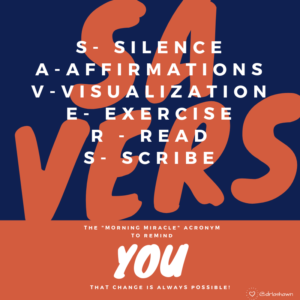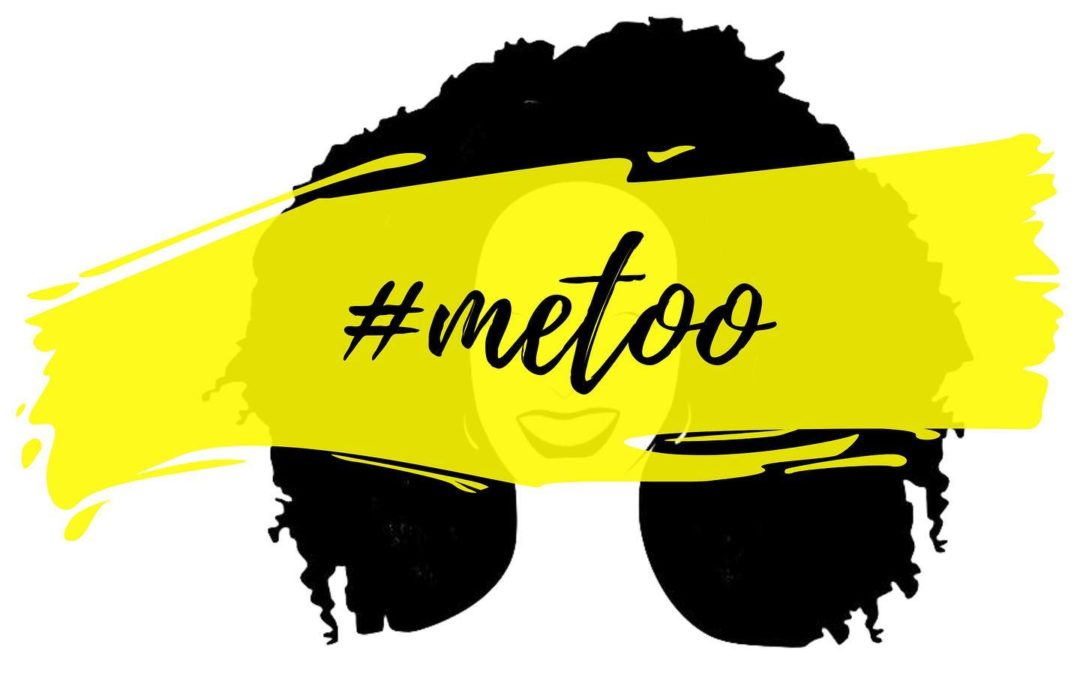
I’m not one to jump on a bandwagon of latest fads, but let me tell you how I found the SAVERS acronym and why I think it’s helpful.
But first, the backstory: In the last quarter of 2018, my good friend introduced me to bullet journaling and in the process of trying different layouts and surfing the learning curve of all things #bujo I ran across this goal setting layout called “Level 10 Life.” (Another blog for another day) While trying to get more background information on what the Level 10 life was, I ran into the same name (Hal Elrod) and three words: The Miracle Morning.
So now I’m searching Hal and the miracle morning to see what this is all about. This led me to Barnes and Noble (because it was out of stock at my public library and I was #5 on the waiting list) on a Saturday night where I found the book and sat down to flip through it and see if I wanted to purchase it.

Where read The Miracle Morning
I finished the book in about 2 hours and took notes of what mattered most and made sense to me.
Enter the S.A.V.E.R.S. acronym.
SILENCE * AFFIRMATIONS * VISUALIZATION * EXERCISE * READ * SCRIBE
It’s actually called the LIFE SAVERS for multiple reasons, but it’s shortened to “savers” and if you check pinterest for SAVERS and bullet journal layouts, you’ll see example upon example of ways that folks are creating their miracle mornings. I was intrigued and skeptical about its effectiveness because of how popular it was. However, I couldn’t stop thinking about it once I got home. Was I ready to try it?
I knew a few things for certain, however, I wasn’t waking up an hour earlier to do it. I’m a single parent of 3 kids under 12 and sleep is a precious commodity. I was open to considering restructuring my present wake-up-and-wrangle-kids-and-go routine to see if or how i could fit this “miracle” into it.
Want to know what sold me on the technique? Two major points/takeaways from the book:
First, the SAVERS are suggested to be done an hour earlier than when everyone else in your home gets up (again, huge NOPE for me). People get so excited about their success that they start waking up 2 hours earlier (2 hours of NOPE). This wasn’t going to be me BUT one sentence gave me enough hope that it could work and it was this – “If you can’t do 60 minutes, then just do 1.”
The way SAVERS is set up is that it’s 10 minutes per letter: 10 minutes of silences, 10 minutes of affirmations, 10 minutes of Visualization, 10 minutes of exercise, 10 minutes of Reading and 10 minutes of Scribing (Writing). The goal is to carve out an hour of time to invest in yourself and start your morning off positively and productively. As a busy as my family is, I knew I could try for 1 minute if I wasn’t able to do 60. I set a goal to do 4 out of 6 letters as consistently as possible. I regularly read and write, so I just focused on SAVE, especially the E, because exercise is not my super power.
That weekend I started and I logged about 45 days of consistent SAVE-ing in my bullet journal. What made it work? It was simple to do and there was always at least one thing to do so that I could check it off of my list.
The piece that sealed the deal for me was a paradigm shift on consistency.
We’ve all heard the adage that “it takes 21 days to form a new habit.” Elrod discusses this in his book and says that it actually takes 21 days to form a new habit but 30 to cement it into your routine. I have to agree with him here because of how he broke down the 30 days. To be brief, he says that Days 1-10 are unbearable and it takes about everything in you just to get to day 10. Once you hit Days 11-20 it’s uncomfortable but no longer impossible. Day 21 is where most of us think we’re cured, so we stop and then wonder why we don’t have the new habit solidly in our lives? It’s because we have to go from day 21 to 30 to do so. He calls it the “unstoppable” part of your process.
I held onto that 10-days-at-a-time mindset for the first 45 days that I was using the SAVERS acronym and, of course, like all good habits, I got excited and proud of myself so I stopped doing them all each day but it’s different this time. It’s easier to start again, even with just 1 minute. 10 seconds of silence, 10 seconds of affirmations, 10 seconds of visualization, 10 seconds of exercise, 10 seconds of reading and 10 seconds of scribing.
It’s truly amazing what you can do in one minute and the sense of accomplishment of “just doing something” that you promised yourself you’d do. So, that’s my very brief opinion on why the SAVERS have become my game changer and I share them with people I know. It’s an easy way to start doing something different that is beneficial to your self and your health.
As always, be gentle with yourself, trust the process, and keep trying. You’re worth it!





